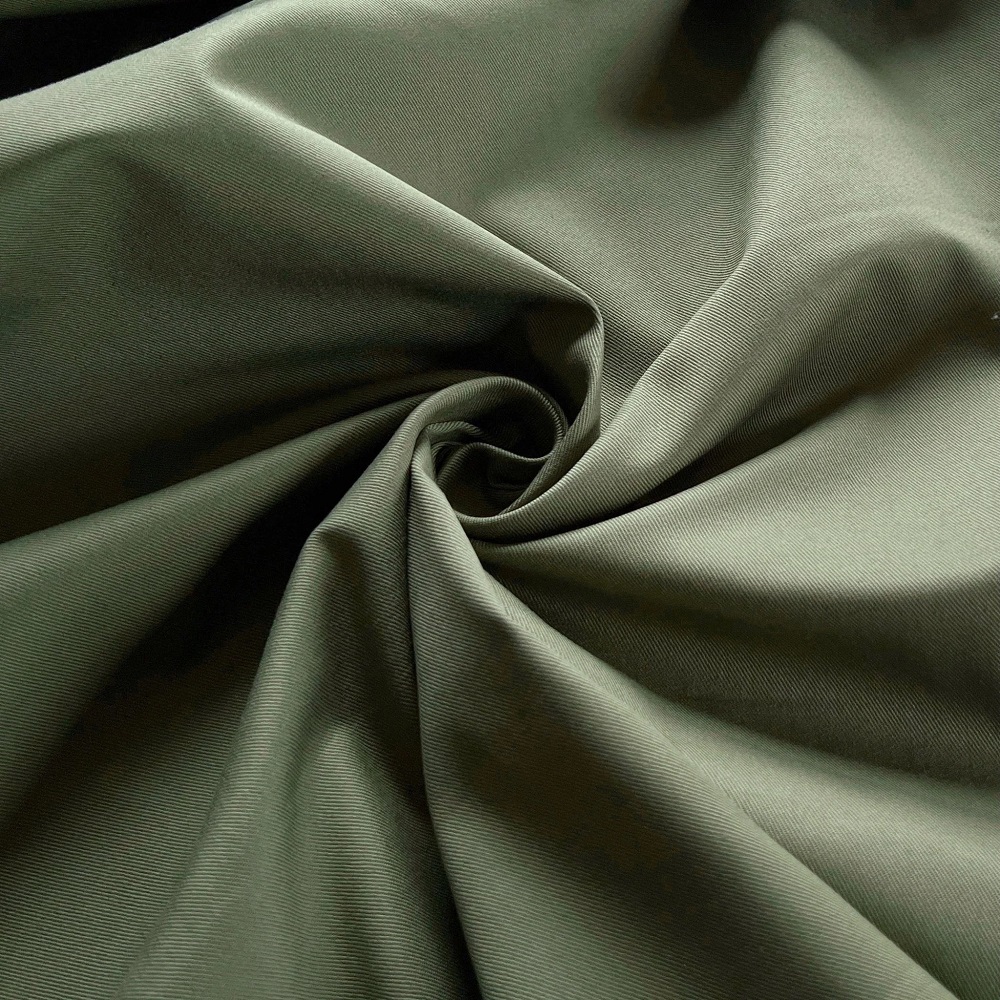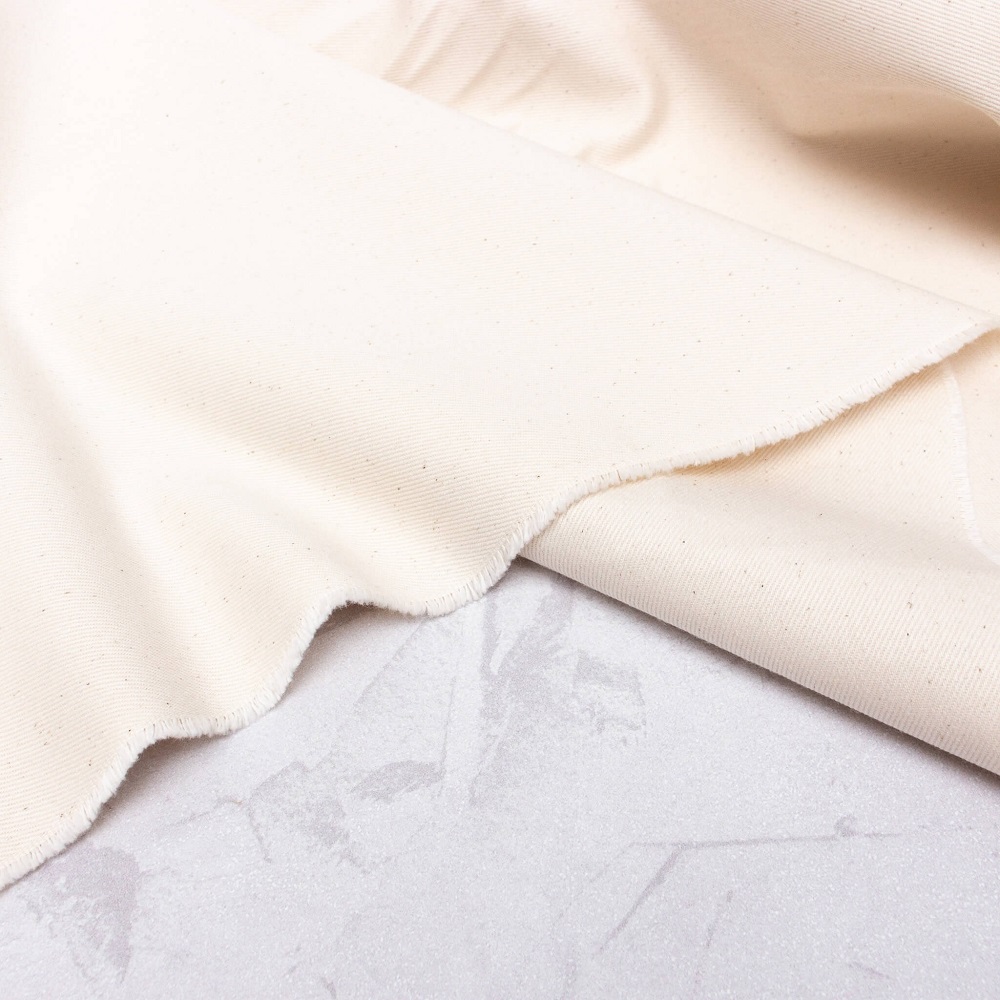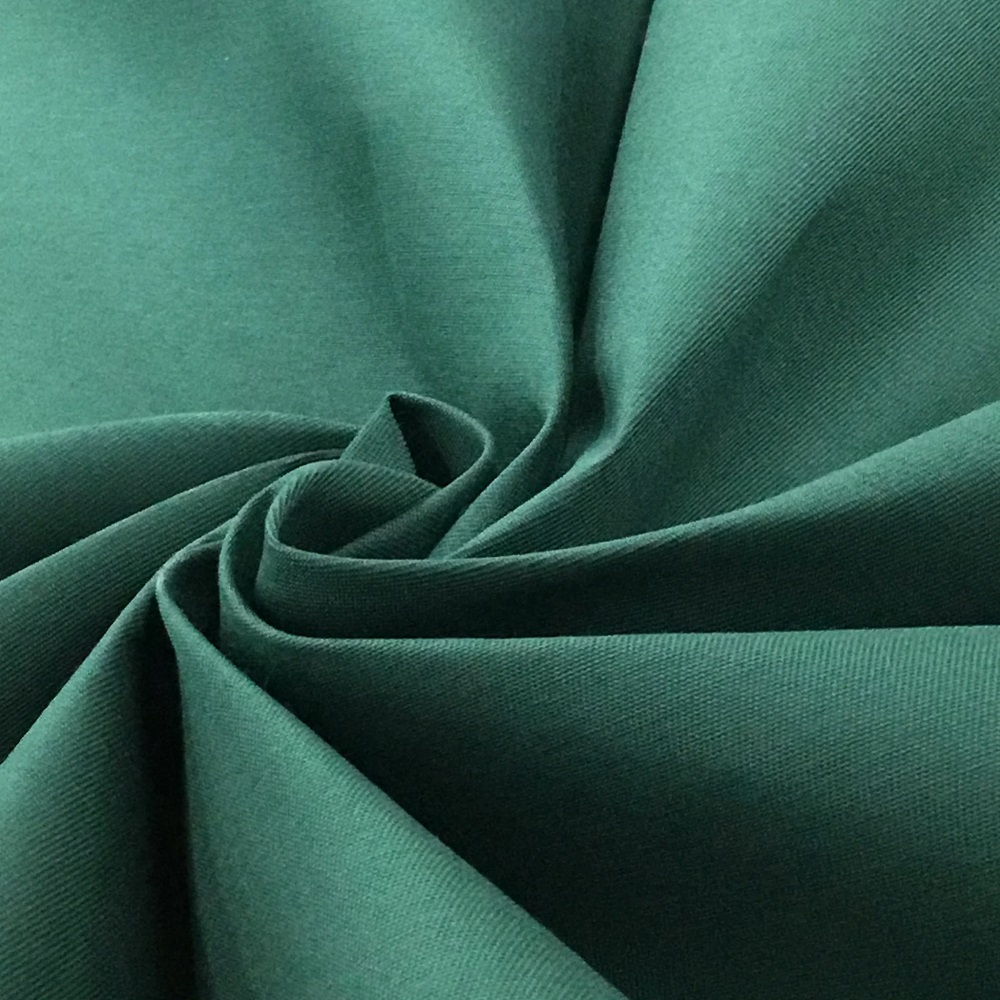Introduction to Cotton Twill Fabric
Cotton twill fabric is cherished for its durability and versatility. Known for its distinctive diagonal weave, this fabric presents a texture that not only adds to its aesthetic appeal but also contributes to its strength. Typically, it is a medium to heavyweight fabric, which makes it an excellent choice for a wide range of apparels and items.
When one speaks of cotton twill, the first things that often come to mind are its softness and slight sheen, characteristics that make it a go-to material for designers. Furthermore, its resistance to wrinkles is noteworthy, ensuring that clothing and items made from this fabric maintain a crisp look throughout the day. This weave style also allows for breathability, a must for comfort in clothing.
The market offers various kinds of cotton twill, each serving different needs and preferences. The adaptability of the cotton twill fabric is highlighted in its ability to take on dyes well, resulting in vibrant colors that last long even after multiple washes.
Whether used in fashion, interior design, or practical goods like tote bags and upholstery, cotton twill fabric stands as a reliable and popular choice. Its esteemed reputation is well-earned, as it continues to meet both aesthetic desires and functional demands. As we delve deeper into the unique aspects of cotton twill, we will uncover why choosing cotton twill fabric for your next project, or wardrobe addition is a decision that melds classic appeal with enduring quality.

Key Characteristics of Cotton Twill
Cotton twill fabric is popular for many reasons. Its key characteristics make it stand out. Here is a look at what sets cotton twill apart from other fabrics.
- Diagonal Weave Pattern: The signature of cotton twill is its diagonal rib pattern. This pattern not only adds to the fabric’s visual appeal but enhances its durability as well.
- Durability: Thanks to the tight weave, cotton twill is highly resistant to tears and punctures. It is built to last, making it a smart choice for everyday wear and heavy-duty use.
- Softness: Despite its strength, cotton twill fabric is soft to the touch. This makes it comfortable for all kinds of apparel, from jackets to pants.
- Wrinkle Resistance: The fabric holds its shape well, resisting wrinkles. Clothes made of cotton twill look sharp with minimal effort.
- Breathability: Cotton twill allows air to circulate, which helps to keep you cool and dry. This is great for clothing intended for warmer climates or active use.
- Color Retention: The fabric absorbs dye deeply and evenly, which means the colors stay vibrant wash after wash.
Understanding these key characteristics can help you make informed decisions when choosing fabric for your projects or updating your wardrobe.
Common Uses for Cotton Twill Fabric
Cotton twill fabric is favored for numerous applications due to its versatile characteristics. Below are some common uses for cotton twill:
- Clothing: Cotton twill is widely used in making jeans, chinos, jackets, and work attire. It’s durable enough for daily wear while being comfortable and stylish.
- Home Decor: The fabric’s texture adds depth to home furnishings such as curtains, upholstery, and cushions. Its durability also makes it suitable for high-traffic furniture.
- Accessories: Because it holds shape well, cotton twill is perfect for hats, bags, and backpacks that see regular use.
- Work Gear: The fabric’s toughness makes it ideal for aprons, coveralls, and other protective gear that require resilience.
These uses highlight how cotton twill fabric blends practicality and style, a quality that makes it a top choice for both fashion and functional items.

Advantages of Choosing Cotton Twill
When considering fabric options, the advantages of cotton twill fabric make it an excellent choice for a variety of needs. Its popularity is not unwarranted, as it offers several benefits that cater to both aesthetic and practical concerns. Here are some notable advantages of choosing cotton twill:
- Longevity: With its tight weave, cotton twill fabric withstands wear and tear, promising longevity for your garments or projects.
- Easy Care: Maintenance of cotton twill is straightforward, due to its natural wrinkle resistance and durability.
- Comfort: The breathability of the fabric ensures comfort, making it ideal for clothing worn against the skin.
- Versatile Style: Cotton twill comes in many weights and finishes, adaptable for various fashion looks and home decor styles.
- Professional Appearance: The crisp finish of the fabric keeps clothing looking professional and neat with less effort.
- Eco-Friendly: As a natural fiber, cotton twill is a more sustainable option compared to synthetic fabrics.
These attributes underscore why cotton twill is a sought-after material for both designers and consumers. Whether you’re crafting high-end fashion pieces or practical workwear, cotton twill provides both style and substance.
Proper Care and Maintenance for Cotton Twill
Caring for cotton twill fabric is easy with the right approach. Ensure your cotton twill items stay in top-notch condition with these simple care steps:
- Read Labels: Always check the care labels before laundering cotton twill clothing or items.
- Use Cold Water: To prevent shrinking and fading, wash cotton twill in cold water.
- Mild Detergent: Opt for a mild detergent to ensure the fabric’s color and texture remain intact.
- Avoid Bleach: Using bleach can damage the cotton twill fibers and alter colors.
- Tumble Dry Low: If machine drying, do so on a low setting. This prevents fabric shrinkage and maintains durability.
- Remove Promptly: To minimize wrinkles, take cotton twill garments out of the dryer as soon as they’re done.
- Air Dry: If possible, air dry your cotton twill items to preserve their quality.
By adhering to these care guidelines, you can extend the life of your cotton twill fabric products, ensuring they remain as good as new for years to come.
Tips for Washing and Drying Cotton Twill
Proper washing and drying are crucial for maintaining the quality of cotton fabric. Here are some tips to ensure your cotton twill garments and items stay in great shape:
- Sort Laundry Properly: Before washing, sort your cotton twill items by color and fabric type to avoid any color transfer or damage.
- Cold Water Wash: Use cold water for washing. It prevents shrinking and helps maintain the vibrant colors of your cotton twill fabric.
- Gentle Cycle Is Best: Select a gentle wash cycle to prevent the fabric from getting twisted or excessively worn out.
- Limit Use of Fabric Softeners: Overusing fabric softeners can cause a buildup that affects the fabric’s breathability.
- Dry On Low Heat: When machine drying, choose a low heat setting to keep fibers from being exposed to too much heat, which can cause damage over time.
- Flat Dry When Possible: Lay cotton twill flat to dry whenever you can. This method reduces the risk of shrinkage and helps maintain the fabric’s shape.
- Shake Out Wrinkles: After washing and before drying, give your cotton twill items a good shake. This simple step can dramatically reduce wrinkles.
By following these guidelines, you can wash and dry your cotton twill garments without worry. Your items will not only last longer but will look better and retain their comfort and style.

Ironing and Storing Your Cotton Twill Garments
Taking proper care of your cotton twill garments not only makes them last longer but also ensures they look their best. Ironing and storing are two critical aspects of garment care. Here are some simple yet effective tips for managing your cotton twill clothing.
- Use the Right Heat Setting: When ironing cotton twill, set your iron to the cotton setting. This will help avoid any heat damage.
- Iron When Damp: If possible, iron your cotton twill clothes while they are still slightly damp. This makes it easier to get rid of wrinkles.
- Use a Pressing Cloth: Place a thin cloth between the iron and the fabric to protect the twill’s texture and color.
- Iron on the Reverse Side: To preserve the sheen and prevent iron marks, iron on the reverse side of the fabric.
- Smooth Out Pockets: Pay attention to pockets and seams. Flatten these areas first to ensure a neat finish.
- Hang or Fold Properly: Once ironed, hang cotton twill garments on wooden or padded hangers. Alternatively, fold them neatly to prevent wrinkles.
- Avoid Humidity: Store your cotton twill in a dry place to prevent mildew. Avoid areas with high humidity.
- Use Garment Bags: For long-term storage, use breathable garment bags to protect your cotton twill clothes from dust.
Remembering these ironing and storing tips will help maintain the quality and appearance of your cotton twill garments, making them a treasured part of your wardrobe for years to come.
Creative Projects with Cotton Twill Fabric
Cotton twill fabric is not only for clothing and home decor; it’s also ideal for creative projects. Due to its strength and ease of handling, this versatile material lends itself to a variety of DIY endeavors. Here are some inspiring ideas for your next project:
- Custom Tote Bags: Stitch your own tote bags. They’re practical and can show off your style.
- Personalized Aprons: Craft aprons for cooking or crafts. They’re durable and protect your clothes.
- Decorative Pillows: Make pillows that add flair to any room. Cotton twill holds shape well.
- Handmade Curtains: Sew curtains that stand out. The fabric hangs beautifully and is long-lasting.
- Unique Upholstery: Reupholster furniture for a fresh look. Its toughness is perfect for daily use.
- Crafty Patches: Create patches for jeans or jackets. They add personality and are easy to sew on.
Cotton twill’s ability to absorb dye makes it great for custom prints. You can create designs that are truly one-of-a-kind. Experiment with colors and patterns – cotton twill holds them well, and they remain vibrant wash after wash.
Whether you’re a beginner or an experienced crafter, cotton twill is a reliable fabric to work with. Its forgiving nature makes it a favorite among DIY enthusiasts. The next time you’re planning a project, consider the many possibilities cotton twill fabric offers.
